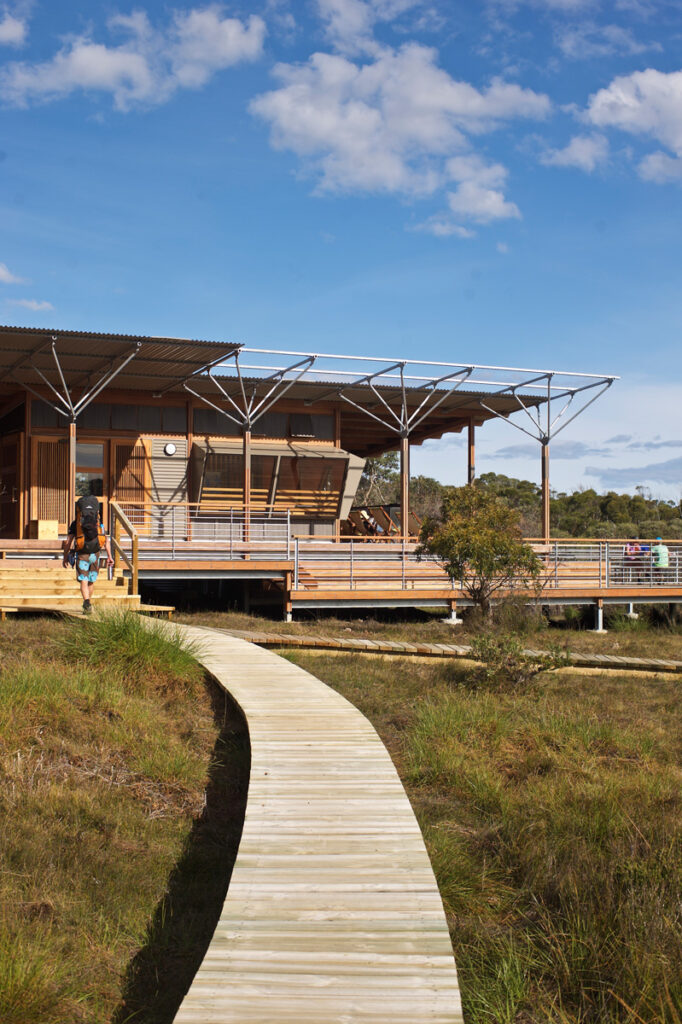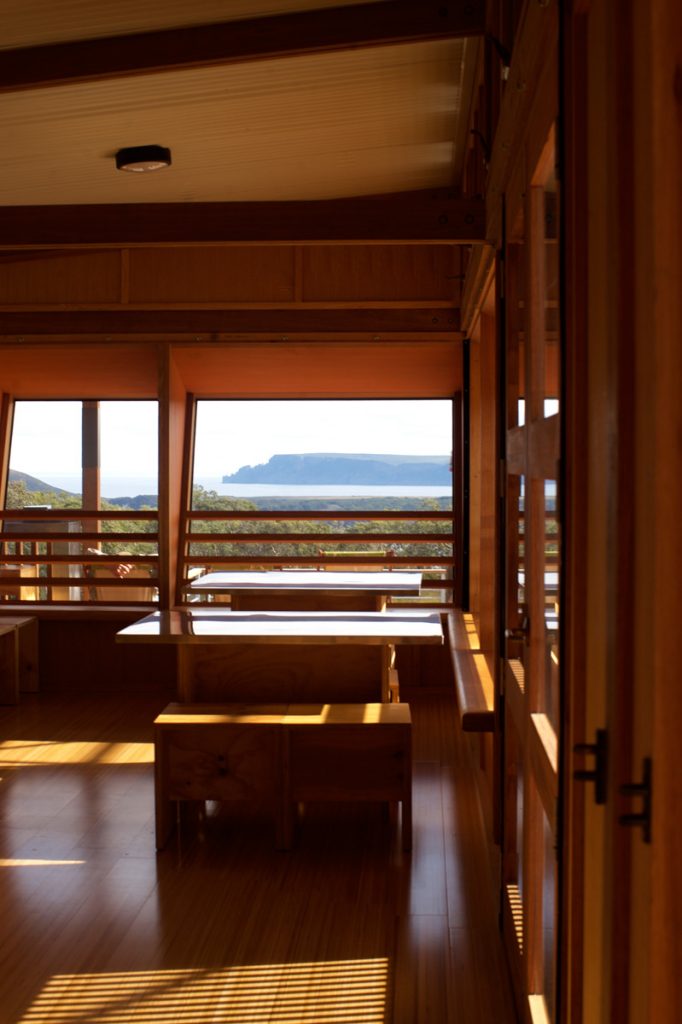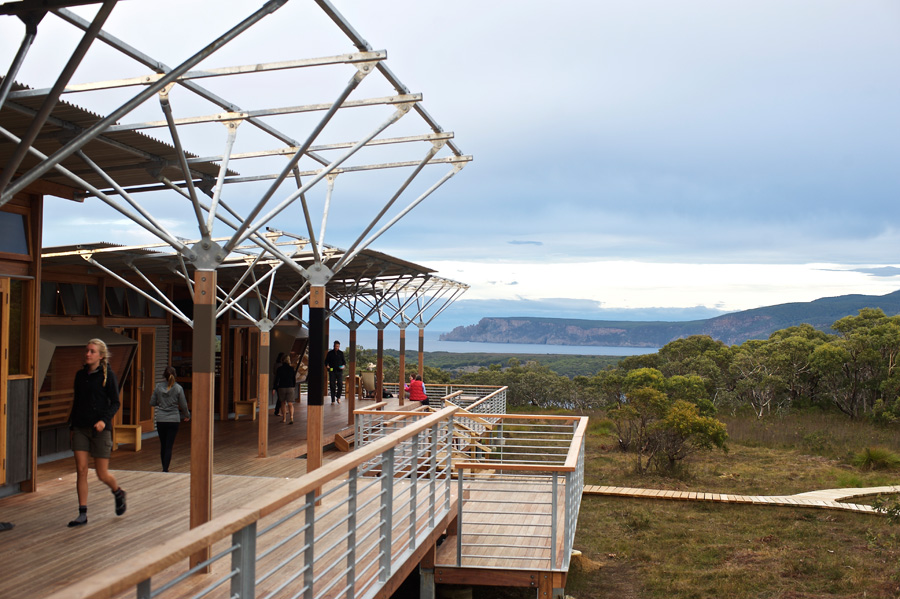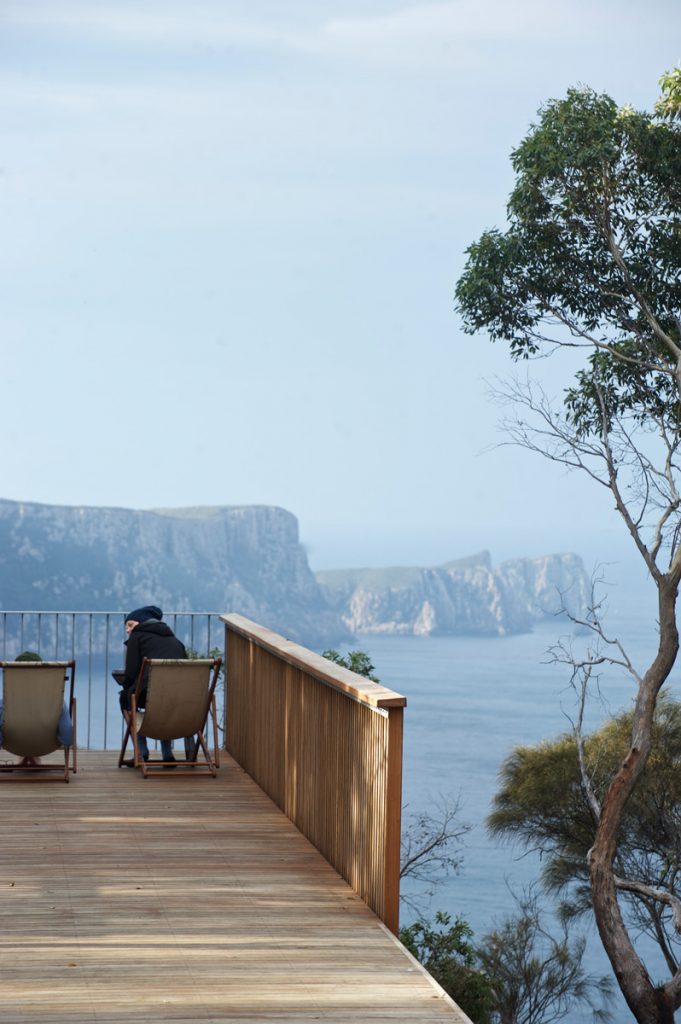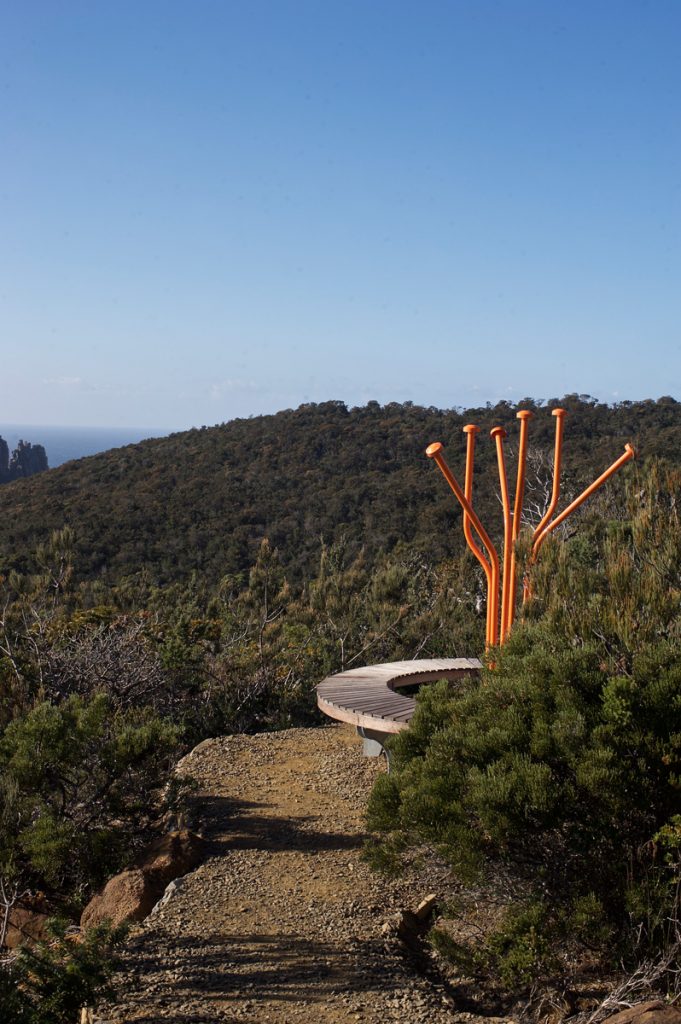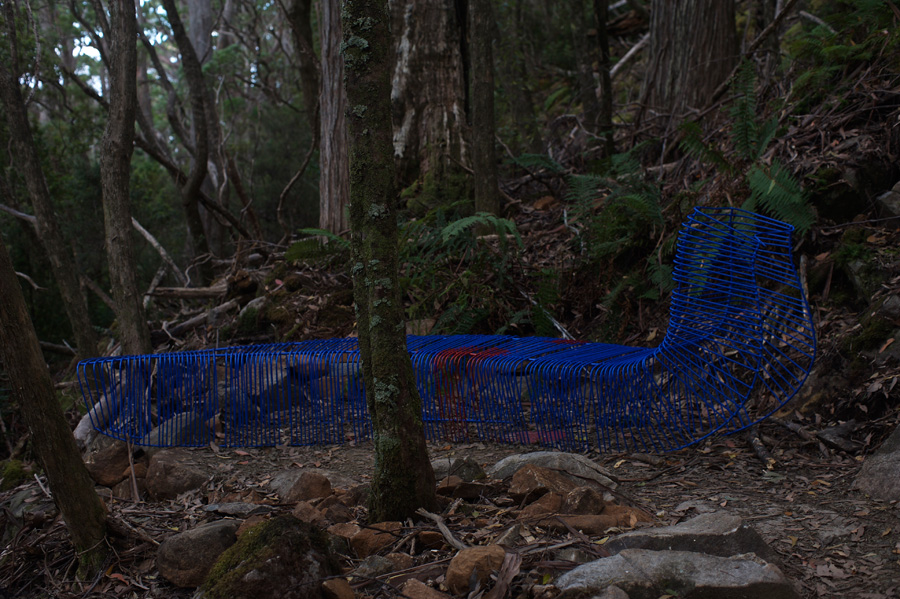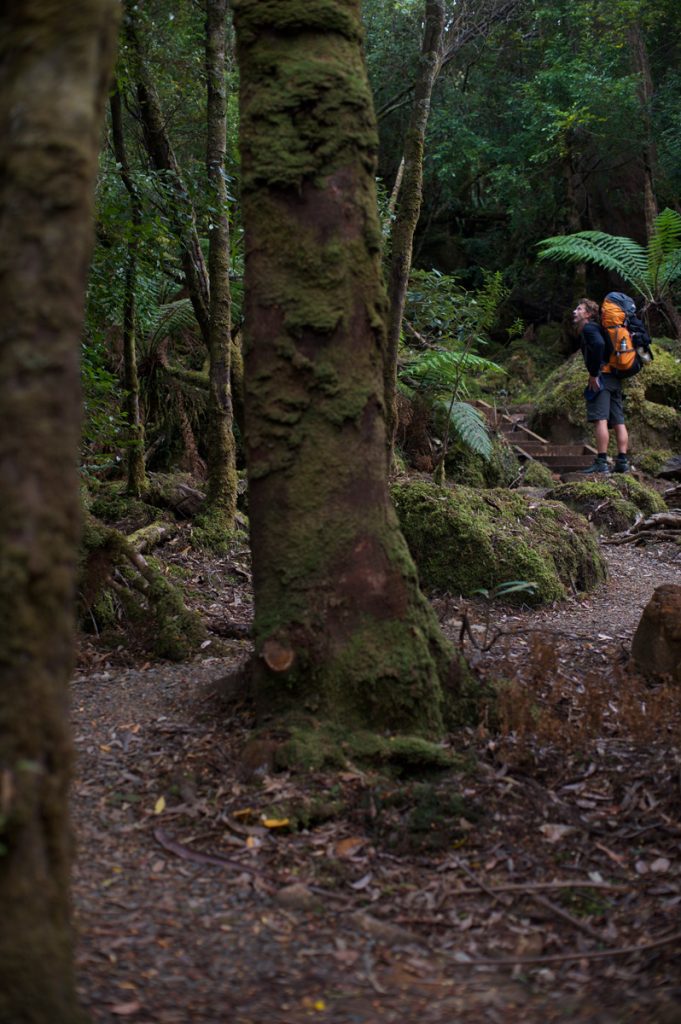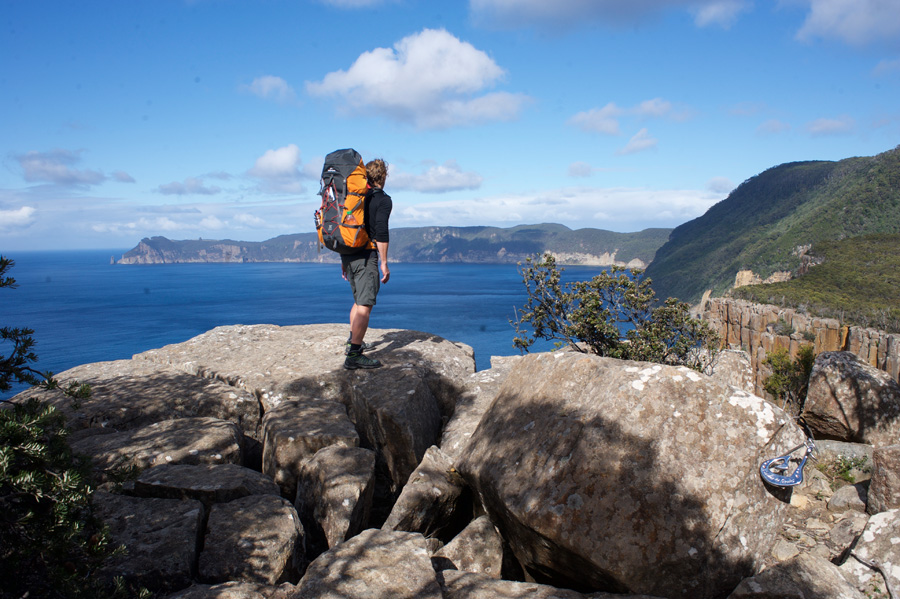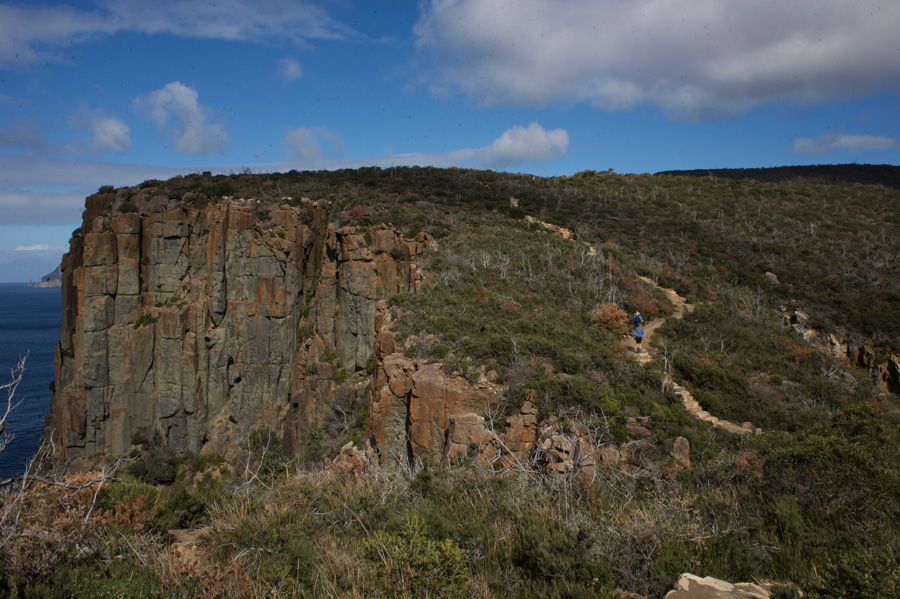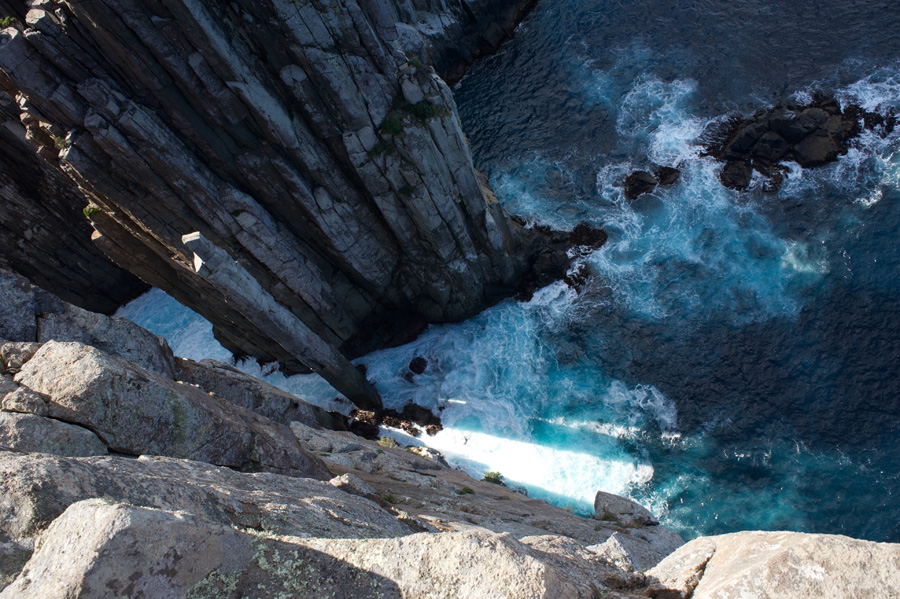Walk On The Wild Side
The new Three Capes Track on the Tasman Peninsula is a feat of design and engineering that matches its peerless setting. An instant classic.
Historically and geologically the Tasman Peninsula is a dramatic and fascinating place, and Parks Tasmania’s vision to make the remote and spectacular coastline more accessible is admirable. The Three Capes Track is destined to become one of the world’s iconic walking destinations.
The four-day walk began from Port Arthur with the Pennicott Wilderness Journeys boat trip crewed by two knowledgeable and passionate local lads. We headed past the white beaches of Safety Cove and Crescent Bay with a running narrative of the geology and local flora and fauna; white belly sea eagle nests pointed out, and the mudstone cliffs of Mt Brown said to be teeming with crayfish. Pods of dolphins chased us back across Maingon Bay to the drop-off beach at Denmans Cove.
We were treated to balmy autumnal weather along with unseasonally warm water, and stopped to swim and lunch at this pristine sandy inlet before beginning the hike to Surveyors’ cabins. As we reached the first headland view we encountered the Playground to Punishment seat designed and built by University of Tasmania students. There are over twenty of these timber and steel interpretive pieces throughout the track and they evoke the history and topography of this formidable landscape. When we reached the Surveyors’ cabins the design and construction effort was apparent. The large deck offered sweeping views out to Cape Raoul, the third cape that will be added to the route when future funding is available.
To create the cabins was a logistical challenge. JAWS Architects responded to the demanding Parks Tasmania geotechnical, environmental, and indigenous heritage requirements. Various transport options for cabin and track materials were evaluated, including powered barrows, and finally helicopter access was deemed the most suitable. This method dictated the construction of the cabins and as JAWS principle architect Scott Verdouw explains, “any conventional knowledge you have about building is thrown out the window.”
The cabins are of post and beam framework and a modular wall panelling system was developed for easy transport. The architectural firm questioned the notion of a hut and were insistent that the design “needed to be simple and elegant”. The cabins at each site have their own theme based on the location and are low-rise with skillion roofs to maximise water collection. The task was a learning experience for JAWS, the two construction firms, Vos Construction and AJR Construct, and Parks Tasmania, but is now being used in other planned projects across the state.
Day two served up varied terrain of sclerophyll type forest and wind-blasted sedgeland. We were fortunate to be equipped with trusty Kathmandu jackets as we skirted the aptly named “Tornado Ridge”. By no means are we hardcore hikers and the well-crafted dry track ensured an accessible route for all. Our eclectic group was testament to the aims of Parks Tasmania and included a couple in their seventies, families with young teenagers and four novice women in their sixties who breezed along barely drawing breath as they caught up on old times. Munro was the second night destination and offered the most arresting views. The architecture of the cabins provided numerous cosy corners to enjoy the sights across Munro Bight to Cape Hauy and Hippolyte Rocks in the distance.
The third day was jaw-dropping with a hike out to The Blade at Cape Pillar. Remarkably no-one had been able to make the trek through this brutal terrain until the late 1960s when Tim Christie persevered with quixotic endeavour on numerous trips spanning several years. His landscape names such as “Vale of Corruption”, “Perdition Ponds” and “Resolution Point” still resonate today.
Late on the third afternoon we arrived at Retakuna: “Place of creaking limbs” – the trees, not ours. As passing showers cleared and the setting sun broke through we glimpsed the discreetly located cabins nestled at the foot of Mt Fortescue. On a crisp fourth day we climbed up the 450 metres to the peak before plunging into a Daintree-like forest on the north-east side of the mountain. Birdsong reverberated in these Tolkienesque gullies and some of the most memorable furniture pieces are located here, including the striking “Blood on Blue Velvet Lounge”. We emerged from the dense bush to the cliff edge and trekked over the saddle to Cape Hauy. The geographical forms of 200-metre dolerite pinnacles need to be seen up close to comprehend their full majesty. The infamous “Totem Pole” has witnessed many audacious climbs including a near-death attempt by Paul Pritchard in 1998. We passed Paul heading out to successfully recreate the ascent that nearly claimed his life and left him partially paralysed – but that is a story for another time.
Heading north, the aquamarine water of Fortescue Bay beckoned for a final cleansing swim. This four-day trek adds another dimension to Tasmania’s worldclass landscape and cultural offerings. Not only does it deliver possibly the most impressive coastline vistas in the country, but it clears the head and invites camaraderie and conversation in an escape to the edge of imagination.
threecapestrack.com.au
parks.tas.gov.au
jawsarchitects.com
pennicottjourneys.com.au
kathmandu.com.au
